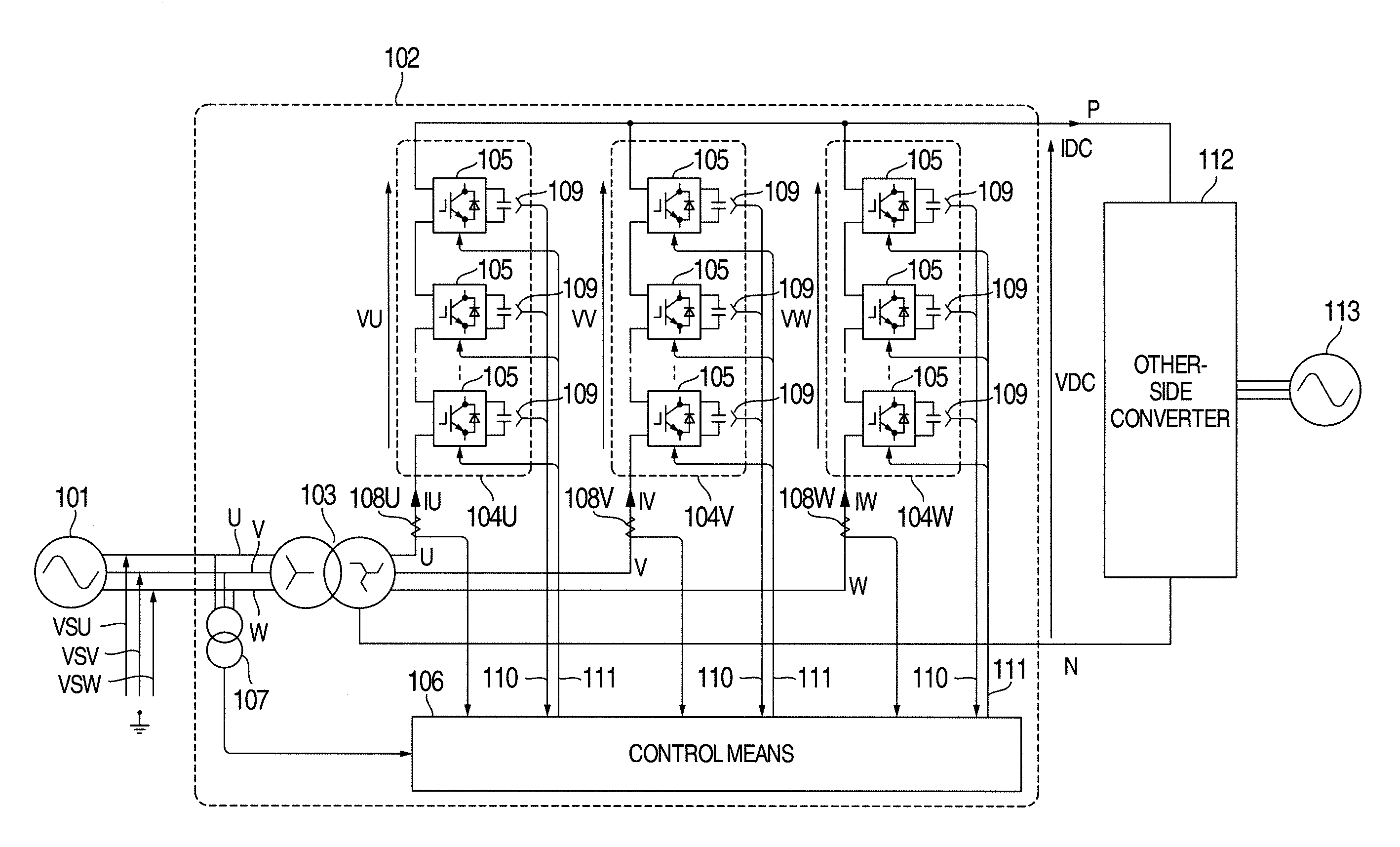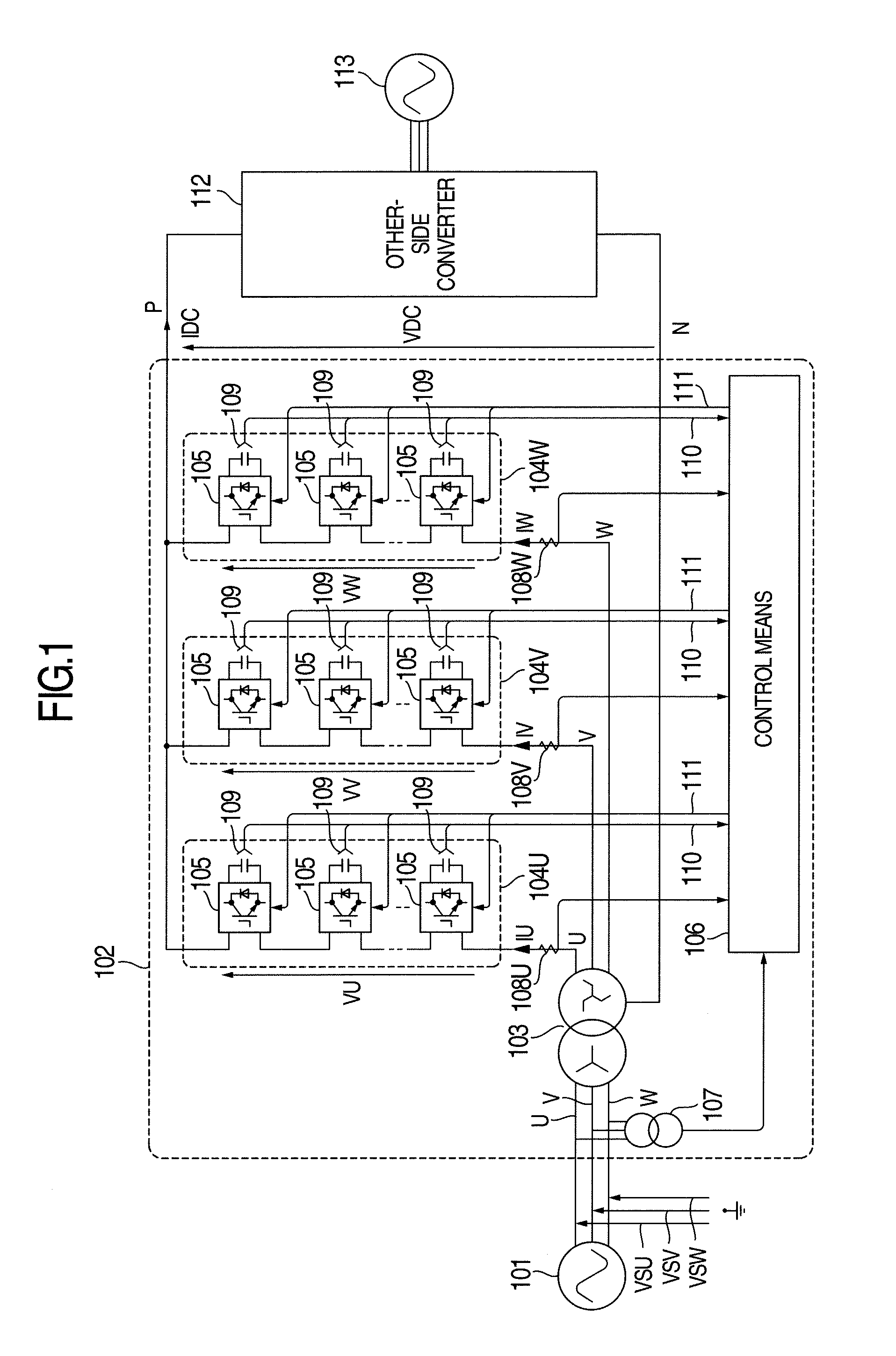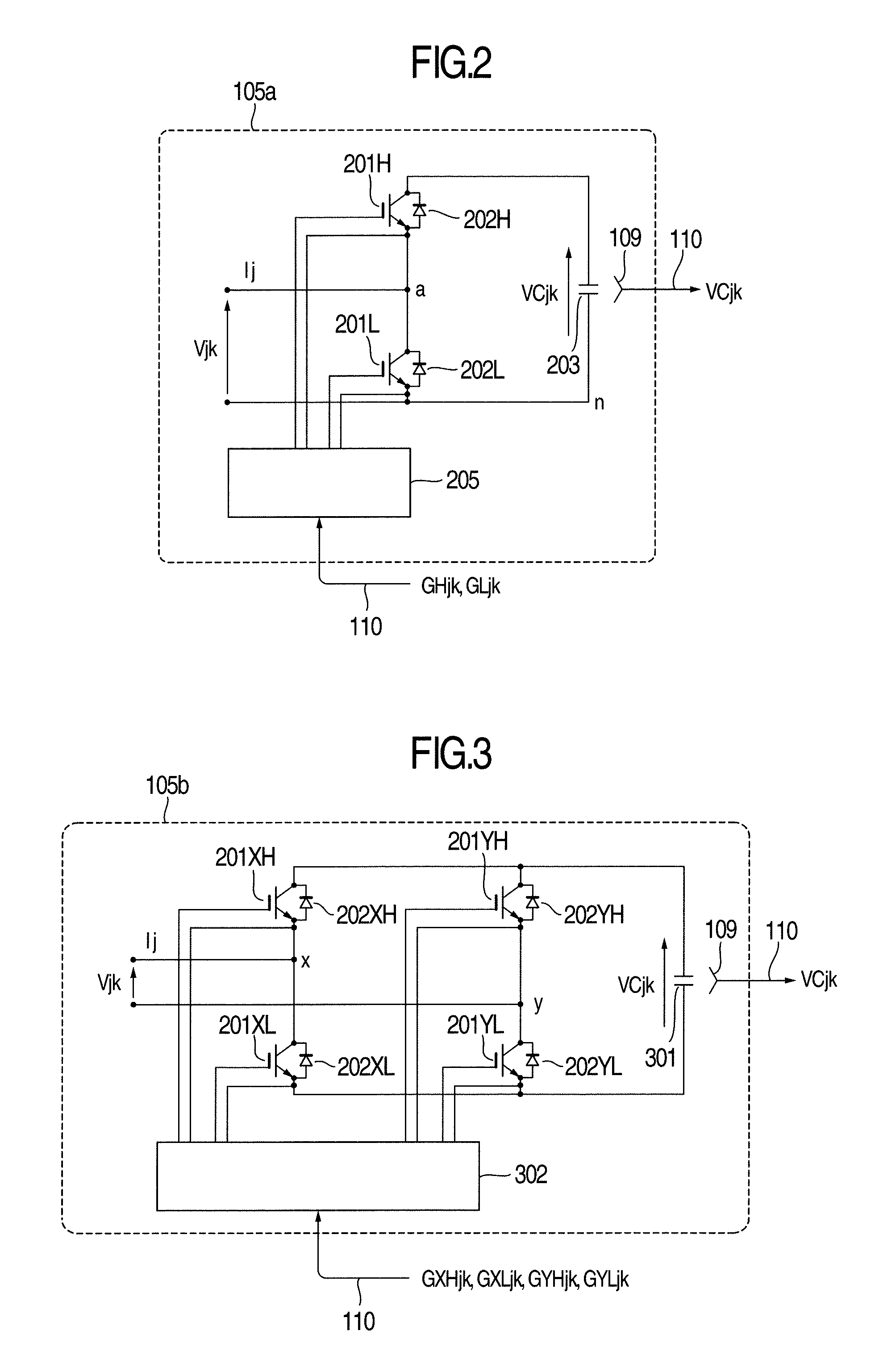Power Conversion Apparatus and Control Method Thereof
a technology of power conversion apparatus and control method, which is applied in the direction of power conversion system, ac-ac conversion, electrical apparatus, etc., can solve problems such as interfering with the other control
- Summary
- Abstract
- Description
- Claims
- Application Information
AI Technical Summary
Benefits of technology
Problems solved by technology
Method used
Image
Examples
first embodiment
[0028]A first embodiment of the present invention will be described below with reference to the accompanying drawings of the embodiment.
[0029]The present invention has a configuration in which in a power conversion apparatus in which a bidirectional chopper circuit is used as a unit converter, three circuits in which three arms in which a plurality of the bidirectional chopper circuits are connected in series and three secondary windings of a transformer are connected in series, respectively, are connected in parallel, one terminal of the parallel connection point is set as a DC positive side terminal, the other terminal thereof is set as a DC negative side terminal, and a primary winding of the transformer is connected to a three-phase power system, when a negative-phase-sequence current flows through the arm according to a difference of an average value for each arm of a voltage in the capacitor, a control means for having a function of balancing an average value for each arm of a...
second embodiment
[0124]A second embodiment of the present invention will be described.
[0125]In the first embodiment, the unit converter 105a (FIG. 2) in the bidirectional chopper circuit system is used in each of the arms 104U, 104V, and 104W. The present embodiment has a configuration in which a part or all of unit converters 105 are replaced by the unit converters 105b (FIG. 3) in the full-bridge circuit system illustrated in FIG. 3.
[0126]According to the present embodiment, in addition to the effects to be obtained in the first embodiment, an effect in which a voltage VDC between a DC positive side terminal (point P) and a DC negative side terminal (point N) can be controlled so as to be positive, zero, or negative is obtained.
[0127]Only points in which the present embodiment differs from the first embodiment will be described below.
[0128]First, an internal configuration of the unit converter 105b in the full-bridge circuit system will be described with reference to FIG. 3.
[0129]A main circuit of...
third embodiment
[0142]A third embodiment of the present invention will be described with reference to FIG. 9.
[0143]The present embodiment differs from the first and second embodiments in that a transformer 901 in which an open winding is used as the secondary winding is used in place of the transformer 103 and in that the arms 104U, 104V, and 104W are divided so as to be arms 903U, 903V, and 903W.
[0144]In the present embodiment, an effect that a potential of a transformer can be freely changed is obtained in addition to the same effects as those of the first and second embodiments.
[0145]Points in which the present embodiment differs from the first and second embodiments will be described below.
[0146]The secondary winding of a transformer 902 is an open winding, and the transformer 902 includes at least six terminals at points u1, u2, v1, v2, w1, and w2. An internal configuration of the transformer 902 will be described later.
[0147]One part of the U-phase arm 903U is connected to a DC positive side ...
PUM
 Login to View More
Login to View More Abstract
Description
Claims
Application Information
 Login to View More
Login to View More - R&D
- Intellectual Property
- Life Sciences
- Materials
- Tech Scout
- Unparalleled Data Quality
- Higher Quality Content
- 60% Fewer Hallucinations
Browse by: Latest US Patents, China's latest patents, Technical Efficacy Thesaurus, Application Domain, Technology Topic, Popular Technical Reports.
© 2025 PatSnap. All rights reserved.Legal|Privacy policy|Modern Slavery Act Transparency Statement|Sitemap|About US| Contact US: help@patsnap.com



